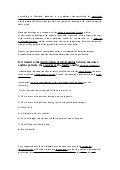

This research (N=943) examines the relationship between burnout, work engagement, and organizational factors that play an important role in the strain process (development of burnout), and in the motivational process (work engagement). The results then confirmed the factorial validity of the MBI-GS-as expected, the MBI-GS consists of three scales that are moderately correlate When the initial model failed to fit the data well, we had to eliminate two items with weak reliability. The results of the confirmatory analyses show us that all three models fit the data almost acceptably, both in the total sample (N=998) and in the separate occupational groups, and that the fit of the three-factor solution appears to be somewhat better than that of the one- and two-factor solutions. An additional aim was to explore the relationships between biographic characteristics (gender, age, work experience, employment level, and occupation) and burnout. In evaluating factorial validity, we carried out an explanatory analysis and a number of confirmatory analyses (using the total database and the three occupational groups). The aim of this study is to examine the MBI-GS factor structure in three occupational groups (both within the human services sector and elsewhere), and to evaluate its reliability (internal consistency). Although the Maslach Burnout Inventory (MBI) is the most commonly employed measure of burnout, researchers have been troubled by some of its psychometric limitations.
#MASLACH BURNOUT INVENTORY TEST PROFESSIONAL#
Conclusions: High work engagement of staff midwives was correlated to high professional efficacy and cynicism of their immediate superiors, suggesting that there might be crossover effects on mental conditions for work between staff midwives and their immediate superiors.This paper concerns the psychometric evaluation of the Polish version of a self-report questionnaire to measure burnout. There was no correlation of work engagement between them. High work engagement of staff midwives was significantly correlated with the professional efficacy (AOR 1.93, 95% CI 1.12 - 3.33) and cynicism (AOR 2.01, 95% CI, 1.04 - 3.90) of their immediate superiors. Results: Immediate superiors showed significantly higher level of work engagement than staff midwives, while there was no difference in the burnout. To examine the association of work engagement among staff midwives with their ages, marital status and work engagement and burnout of their superiors, logistic regression analysis was conducted. Work engagement and burnout (exhaustion, cynicism, and professional efficacy) were assessed by the Utrecht Work Engagement Scale and the Maslach Burnout Inventory-General Survey, respectively. Questionnaires were distributed to 452 midwives/nurses working on maternity and labor wards of 20 hospitals and responses from 96 staff midwives and 17 of their immediate superiors were analyzed. Methods: A cross-sectional questionnaire survey was employed in Japan. The aim of study was to examine the work engagement and burnout of staff midwives working on maternity and labor wards and to determine the factors related to high work engagement of staff midwives, including their immediate superiors’ work engagement and burnout. Work Engagement, Burnout, Staff Midwives, Immediate SuperiorsĪBSTRACT: Introduction: Mental conditions for work among workers are related to clinical performance and influenced by colleagues within the same workplace. Relationship of High Work Engagement among Staff Midwives with Their Immediate Superiors’ Burnout on Maternity and Labor Wards in JapanĪUTHORS: Emiko Kawauchi, Reiko Inoue, Kazutomo Ohashi and Leiter, M.P., Eds., The Maslach Burnout Inventory: Test Manual, Consulting Psychologists Press, Palo Alto, CA. (1996) Maslach Burnout Inventory-General Survey.


 0 kommentar(er)
0 kommentar(er)
